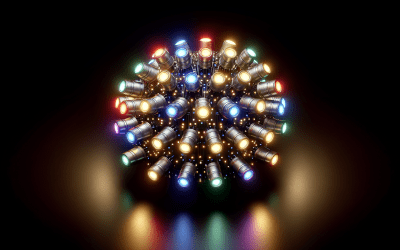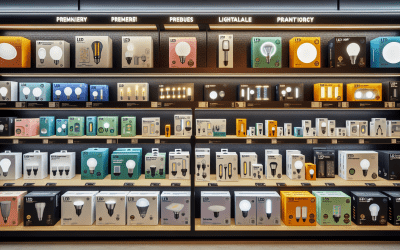Introduction
As your trusted lighting experts in Brisbane, we understand the critical role that emergency lights play in public safety. These lifesaving implements illuminate our path during situations where regular lighting fails, such as power outages or disasters. Despite their pivotal role, their functionality is often overlooked until the need for their use arises. Regular testing of emergency lights is thus a paramount necessity to ensure their optimal operation when needed most.
But how can this be achieved? The process of testing emergency lights might seem overwhelming to many, especially when you’re juggling it alongside your other responsibilities. We’re here to assure you that it’s not as complex as it appears, you simply need the right information at your fingertips.
Quick Summary
Testing emergency lights involves manually simulating a power failure, inspecting the response of the lights, checking their illumination duration, examining the structural integrity, and replacing faulty components.
The Importance of Testing Emergency Lights
Before diving into the intricacies of how to test emergency lights, let’s understand why this routine check is of utter importance. Emergency lights serve as a beacon of safety during unexpected power outages in your building or workspace. Whether it’s due to an internal failure, storm or fire, you don’t want to find yourself stranded in the dark. Proper functionality of emergency lights facilitates smoother evacuation and reduces instances of injuries that could come about due to poor visibility or panic.
Beyond safety, compliance is another critical reason for testing emergency lights. Various Australian safety standards and building codes mandate regular assessments of emergency light systems. Non-compliance could result in hefty penalties. Regular testing ensures your adherence to the set rules and enhances your legal standing.
Monthly Testing Procedures
According to the Australian Standard AS/NZS 2293.2:1995, emergency and exit light systems should undergo monthly and annual tests. Monthly tests aim at ensuring each fixture operates correctly.
- The first step is to cut off power supply to the lights. This process simulates a power outage and triggers the emergency lights to switch on.
- Observe if the lights turn on instantly. The bulbs should light up at full brightness. If the lights fail to turn on, note down the specific units for further inspection.
- Verify the system’s indicator lights. Green often signifies that everything is working, while red indicates a potential issue.
Please note that calling in professionals like our team of emergency lighting Brisbane technicians is advised if you’re unfamiliar with electrical systems or if any faulty units are noted during this process.
Annual Testing Procedures
Different types of lights possess varied emergency lighting capabilities, making the annual test crucial to gauge their effectiveness. This extensive test carried out annually examines whether the emergency light fixtures can sustain for at least 90 minutes, as per Australian Standard requirements.
Just as in the monthly test, power to the lights is manually cut off, simulating a power failure. Once the emergency lights are activated, track their performance over an extended period. They should remain on for at least 90 minutes at their full brightness. Any lights that dim prematurely or fail to stay illuminated for the full period need addressing.
Inspecting and Addressing Issues
Merely testing the lights isn’t enough – it’s equally essential to address issues detected during the tests. Any defective lights should be reported and rectified promptly to avoid jeopardising safety during real emergencies. This process often involves checking the structural integrity of the fixtures and the lightbulb, verifying the battery condition and the wiring, or replacing the entire unit if necessary.
If you find certain bulbs needing replacement in Brisbane, you can turn to us for top-tier LED lighting solutions that are energy-efficient and have a longer lifespan. It’s also worth noting that the type of bulb used in your fixtures – be it LED or incandescent lightbulbs – impacts the maintenance and replacement needs of your emergency lighting system.
Conclusion
In conclusion, testing emergency lights should be a part of your regular maintenance schedule. Not only does this upkeep ensure the safety and wellbeing of all building occupants, but it also places you on the right side of the law.
The process of testing involves simulating power failures, observing the light response, checking the duration of illumination, and addressing any anomalies. While it’s possible to oversee these procedures yourself, the guidance of Brisbane lighting electricians is invaluable. At Modern Lighting Brisbane, we have the expertise and the tools to carry out comprehensive tests on your emergency lights, ensuring that they are in impeccable working condition, ready to guide you when the need arises. Why not reach out to us today and let us illuminate your safety path?







